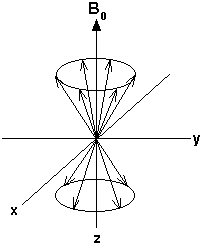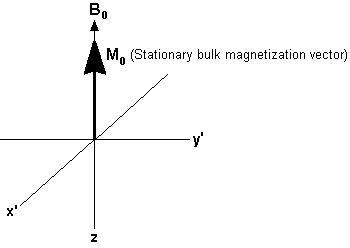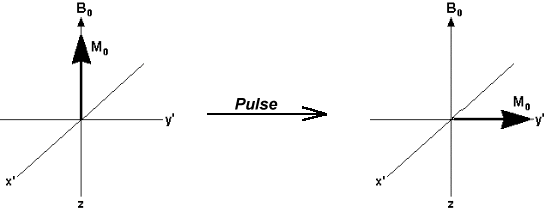

There are two general types of NMR instrument; continuous wave and Fourier transform. Early experiments were conducted with continuous wave (C.W.) instruments, and in 1970 the first Fourier transform (F.T.) instruments became available. This type now dominates the market.
Continuous wave NMR spectrometers are similar in principle to optical spectrometers. The sample is held in a strong magnetic field, and the frequency of the source is slowly scanned (in some instruments, the source frequency is held constant, and the field is scanned).
The magnitude of the energy changes involved in NMR spectroscopy are small. This means that sensitivity is a major limitation. One way to increase sensitivity would be to record many spectra, and then add them together; because noise is random, it adds as the square root of the number of spectra recorded. For example, if one hundred spectra of a compound were recorded and summed, then the noise would increase by a factor of ten, but the signal would increase in magnitude by a factor of one hundred - giving a large increase in sensitivity. However, if this is done using a continuous wave instrument, the time needed to collect the spectra is very large (one scan takes two to eight minutes).
In FT-NMR, all frequencies in a spectrum are irradiated simultaneously with a radio frequency pulse. Following the pulse, the nuclei return to thermal equilibrium. A time domain emission signal is recorded by the instrument as the nuclei relax. A frequency domain spectrum is obtained by Fourier transformation.
If a signal of frequency, F, is turned on and then off again very rapidly, then the result is an output consisting of many frequencies centred about F with a bandwidth of 1/t, where t is the duration of the pulse. This means that radiation is produced of all frequencies in the range F ± 1/t. If t is very small, then a large range of frequencies will be produced simultaneously, and all target nuclei in a sample will be excited.
To understand the effect of the radio frequency pulse, consider the precessing nuclei;

As can be seen, there are more nuclei aligned with the field than against it. This means that there is a resultant magnetization vector aligned with the field. Now, imagine that the laboratory itself is spinning at the Lamor frequency (the frequency of precession). To an observer in the laboratory, the nuclei would appear to be stationary, i.e. not precessing. Because more nuclei are aligned with the field than against, the magnetization vector is aligned with the field. The idea of spinning the laboratory is called the "rotating frame of reference". Using the rotating frame of reference, the magnetic behaviour of the system can be shown like this;

A pulse of radio frequency radiation is applied along the x' axis. The magnetic field of this radiation is given the symbol B1. In the rotating frame of reference, B1 and M0 are stationary, and at right angles. The pulse causes the bulk magnetization vector, M0 , to rotate clockwise about the x' axis. The extent of the rotation is determined by the duration of the pulse. In many FT-NMR experiments, the duration of the pulse is chosen so that the magnetization vector rotates by 90°.

The detector is aligned along the y' axis. If we return to a static frame of reference (i.e. stop spinning the laboratory at the Lamor frequency) the net magnetic moment will be spinning around the y axis at the Lamor frequency. This motion constitutes a radio-frequency signal which can be detected. When the pulse ends, the nuclei relax and return to their equilibrium positions, and the signal decays. This decaying signal contains the sum of the frequencies from all the target nuclei. The signal cannot be recorded directly, because its frequency is too high. It is mixed with a lower frequency signal to produce an interferogram of low frequency. This interferogram is digitised, and is called the Free Induction Decay, (FID). Fourier transformation of the FID yields a frequency domain spectrum.
You should now have a basic understanding of how a Fourier transform NMR spectrometer works. FT-NMR is a complicated technique, and further reading is recommended. In particular, "Principles of instrumental analysis" by Skoog and Leary contains an excellent chapter on NMR spectroscopy. Also recommended is "Introduction to NMR spectroscopy" by Abraham, Fisher and Loftus.
|
|
|

 Biosciences Homepage
Biosciences Homepage
 |